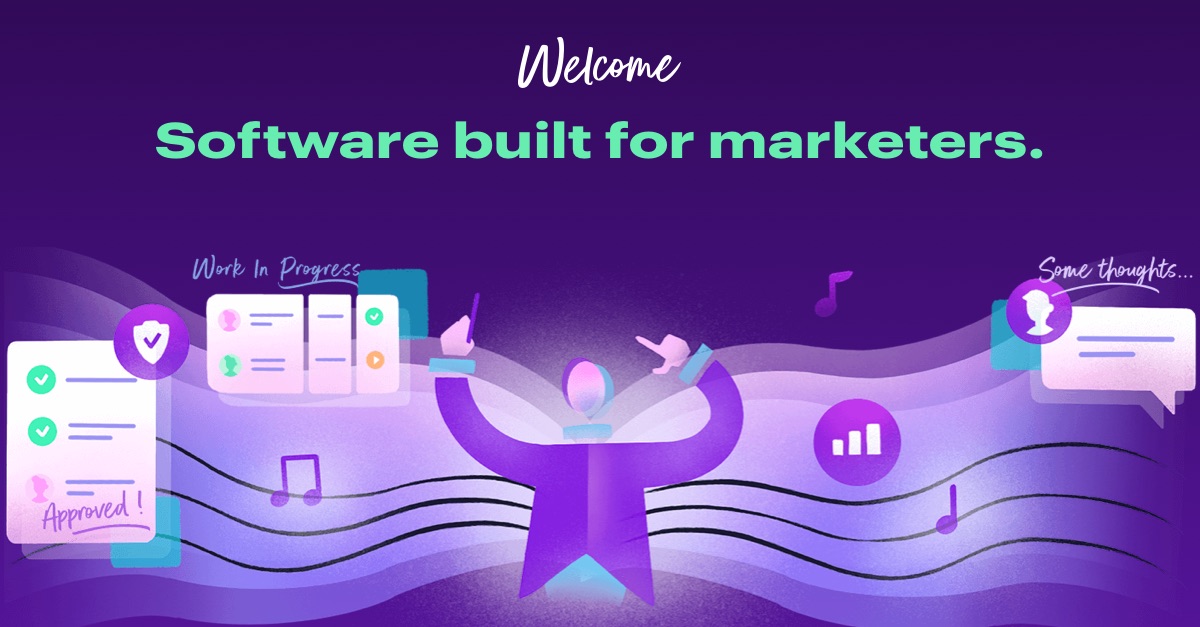MARKETING
Copywriting Courses to Advance Your Career

In copywriting, everybody has to begin somewhere – like many other people, you may be toying with the idea of beginning or advancing with a copywriting course.
Copywriting is more of a journey and less of a destination. Except, you can start anywhere. It could start with an idea from your friend Jane.
Before you know it, you’ve quit your job.
Soon you’re building a website, working on a LinkedIn profile, and sending your first cold pitch to an unsuspecting client somewhere.
It won’t be long into your copywriting career before you meet the idea of improving your skillset. It’s usually once the YouTube tutorials lose their effectiveness and “how-to” blogs put you to sleep.
Then you hear about copywriting courses, and you don’t know what to make of them.
To Enroll or Not To Enroll: That’s The Question
We all know that copywriting training courses are not for everyone. However, what many people aren’t sure of is whether these courses are for them.
It’s a long journey from naive newbie to copywriting professional earning the $30 an hour (or more), and copywriting courses make up a significant part of that journey.
So, back to our question: who are copywriting courses for?
1. Beginners
If you were once a beginner, then you’re pretty familiar with the uncertainty of not knowing where to start.
Do you put one foot in and take a course or just jump in and start pitching? Why not look for an employer or, better yet, run your own business? It can be tough.
That said, copywriting courses offer a pretty good place to familiarize yourself with the industry and learn fundamentals.
2. Copywriters Looking to Advance Their Careers
Many copywriters believe that copywriting courses are for newbies only, but nothing could be farther from the truth.
You can still enroll in a course with years of experience behind you. Your goal might be to learn or perfect a new skill. If there’s some SEO copywriting certification you deem crucial to your career, don’t be shocked to find yourself sitting in a writing class.
3. Copywriters Willing to Join A Community
With the rise of mobile and remote freelancing, building professional relationships has never been this hard. How many copywriters do you know that you can drink beer with at the bar?
Like any other industry, building professional relationships in copywriting is essential.
You may want to join a copywriting community to make friends and acquaintances. Who knows what could come out of it – your next full-time client, a business partner, or, even better, some guy you can drink beer with.
What To Expect (and What’s Too Good To Be True)
Creating killer content, generating quality copy, and converting leads are what get many copywriters up in the morning. Perfecting this skill set is what keeps them up at night.
But before you hop into the copywriting bandwagon, there are a few facts you have to get straight. Many courses sell a lot more than they offer. Subsequently, many learners go in with expectations beyond what they can achieve.
Before you start searching for copywriting courses, remember:
Copywriting Courses Don’t Replace Experience
Copywriting courses will teach you many skills: content marketing, creating landing pages, building your website, and writing skills.
That said, some things – such as writing persuasive copy – can only be learned through experience. You’d be surprised how much you grow as a marketing professional by writing copy for days on end, dealing with rejections, and creating improvement.
Copywriting Courses Don’t Lead To New Clients (Directly)
If you’re like most emerging freelance copywriters, clients are everything – you eat, drink, and dream clients. But there’s good news and bad news.
The good news is that writing courses will equip you with the skills to approach, appeal, and acquire clients. The bad news is that even the best copywriting courses are not a guarantee for clients.
Copywriting Courses Won’t Give You Everything.
There’s no secret copywriting formula, and anyone selling “a perfect system for copywriting” is a liar. However, there are a few copywriting courses that teach effective strategies.
Such courses will give you a step-by-step procedure of fundamentals such as email marketing essentials, running a copywriting business, and content writing.
Five Online Copywriting Courses Every Freelance Copywriter Should Have Bookmarked
What’s left is determining how and where you want to start. This has only gotten harder over the last few years since everyone and their mom is selling a copywriting course nowadays.
That said, searching for courses without insight is like playing Russian roulette. Only that each round costs $500.
Since you’re too busy, we’ve compiled a list of the best copywriting courses and stripped them down to the good, the bad, and the compromise.
Some courses that you should consider checking out include:
1. The Accelerated Program for Six-Figure Copywriting
Did you know that personalized calls to action (just adding a name) are 202% more effective? If you didn’t, they teach that in the Accelerated Program for Six-Figure Copywriting from AWAI.
Every copywriter has heard enough about the American Writers and Artists Institute (AWAI) copywriting course to write a book about it. Even still, the insights you can gain from their programs are invaluable.
This course is great for:
- Aspiring direct response copywriters
- Anyone willing to learn about writing long sales letters
- Beginners and intermediates who feel like they still have lots to learn
- Those willing to spend $350+ on a copywriting course
AWAI’s six-figure copywriting course is one of the most prominent courses out there. Plenty have walked in without knowing a thing about direct response copywriting and gone on to become professional copywriters.
This course includes 587 pages of modules in captivating virtual textbook format. It includes thorough practices, techniques, and lessons that will take you through the intricacies of copywriting.
Some of the key topics you should expect to learn include:
- How to find clients and kickstart a copywriting career
- Elements of a sales letter
- The structure of direct-response sales copy
- Strategies for the writing process
Beyond that, this course teaches using rote techniques, like learning and repetition, to ensure you don’t forget these concepts anytime soon. However, you shouldn’t expect an immediate six-figure income from this course (or any other course, for that matter).
2. Malcolm Gladwell’s MasterClass on Writing
You don’t need to spend much time on a search engine before you encounter high praise for Malcolm Gladwell’s masterclass on writing.
One reviewer describes it as “eye-opening, infectious, and inspiring.”
This is a course by Malcolm Gladwell, best-selling author of Blink and The Tipping Point. It’s not as well-known that Gladwell is a successful professional copywriter. He not only teaches you how to be a good copywriter but also how to have fun doing it.
This course is for:
- People whose desire for writing goes deeper than just money
- Copywriters looking to improve their creative process
- Established and intermediate copywriters who want their ideas challenged
- Copywriters willing to spend $180 on a copywriting course
His class includes 24 lessons that run between three and 20 minutes. Above that, the course offers 100% exclusive non-fiction writing content and a downloadable workbook.
A few topics that Malcon Gladwell covers in his masterclass include:
- Structuring Narrative: The Imperfect Puzzle
- Holding Readers: Controlling Information
- Tone and Voice
3. Marie Forleo’s Copy Cure
Did you know that any marketer’s number one problem is the content creation and ideation process? (Welcome & Sirkin Research, Jan 2021). That explains why so many people enroll in Copy Cure.
In Copy Cure, Marie Forleo joins forces with Laura Belgray of Talking Shrimp to create what may be one of the most actionable copywriting courses out there.
It’s helping copywriters and business owners alike, many of whom later report increased open rates for their emails, visits to their webinars, and conversions on their websites.
You should consider this course if:
- You’re a beginner to website copywriting
- You’re struggling to find your voice in your copy
- You feel that your copy doesn’t resonate with people
- You’re a seasoned writer who feels they’re stuck in a rut
- Anyone willing to spend $1,499 to hone their copywriting skills
This course will teach you to write web pages that speak to your audience and convince them to take action. In the words of one reviewer, ” it’s a course I can’t consume fast enough.”
If you decide to go for this course, look forward to the following four modules:
Module 1: Finding The Right Words
This module will teach you how to find the exact words that resonate with your target audience.
Module 2: Fixing Your Sales Stopping Mistakes
Every copywriting mistake is an opportunity to learn. In this module, you’ll learn words to avoid, incorporate, and leverage to become a successful copywriter in your field.
Module 3: How To Increase Your Sales
This is where you learn the subtle art of creating commanding landing pages, captivating CTA’s, and amazing sales pages.
Module 4: How to Write, Faster, Better, and Avoid Writer’s block
Writer’s block is the most significant obstacle to productivity, and this module equips you with the tools to deal with it.
4. Copy School From Copyhackers
Copyhackers was founded by Joanna Weibie as a one-stop-shop for all things copywriting. Copy School is their course to expose newbie writers to skills necessary to grow their careers.
Who is Copyhackers for:
- Those in search of a (partly) free course
- Copywriters interested in conversion copywriting
- Copywriters who’ve just begun their copywriting portfolio
- Writer’s, e-commerce business owners, and marketers
This course will offer modules, resources, templates, and worksheets on the background of frameworks that are proven to work. Also, a ton of Copyhackers content is free to students, but you’ll have to pay to get elsewhere.
Some of the modules you can expect with this course are from the 10X series, which include:
- Web Copy
- Landing Page
The best part about it: there is a free version, where you can learn without paying a dime.
5. Sarah Turner’s Write Your Way to Freedom
Everyone has seen Sarah Turner’s course on social media. You’re probably wondering if it’s worth 2000 of your hard-earned bucks?
Write Your Way to Freedom is a self-paced, thorough, and bite-sized course that Sarah Turner created as a guide to professional copywriting. It teaches everything from optimizing your content creation processes to cold-pitching to clients.
This is a great course if:
- You have zero copywriting, digital marketing, and content writing experience
- If you’re into freelance copywriting
- If you’re willing to spend $1997 on an online course
Sarah’s course spans 8 modules and includes 50 step-by-step lessons, an amazing community of writers, and a two-week money-back guarantee.
If you settle on this course, you can look forward to these modules, and more:
- Cultivating a Business Owner Mindset
- Building a Solid Foundation
- Getting Started Writing
- Look Like A pro
- Client Acquisition
- Pitching and Onboarding Clients
- Advanced SEO
That’s A Lot Of Work: Why Not Bring It Under One Dashboard
It takes a lot to write amazing copy – tracking deadlines, organizing workflows, creating content calendars, and manipulating files.
As a human, you can only do so much. That’s where Welcome comes in. Welcome is a powerful marketing management software that takes all aspects of your content creation and brings them within reach, under one dashboard.
From this dashboard, you can track progress, organize workflows, keep deadlines and get notifications. Ready to give it a try? Get started with a free Welcome account today!
Source link













You must be logged in to post a comment Login